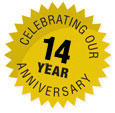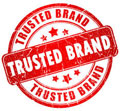Roofing Strategies to Counter Hail and Snow Damage
Roofs take up the harshness of the weather to guarantee safety to your home. Hail, snow, and ice are three key agents of natural disasters. Proper precautionary measures and repairing works are vital to counter roof damage. Homeowners need to have a clear idea on the nature of the impacts to find a good roofer or to select a suitable home insurance plan.
The problem with hailstorms
Heavy hailstorms practically loosen a merciless battery of assualt on the roof. The momentum of the hail can cause extensive bruising all over the asphalt surface. Other roofing materials are equally prone to develop cracks, chips, and broken edges under a hailstorm. Sometimes, a big chunk of hail can shatter the skylight or displace shingles altogether. Any gap in the roofing membrane or shingles acts as weak points under the massive pounding.
The wind amplifies the weak spot and often causes extensive damage in its adjacent areas. The detached granules from the membranes and shingles result in long-term damage by clogging the drains and causing water stagnation.
The weight of snow
The accumulated weight of snow is a major concern as it can even cause an entire roof to collapse. It is vital to clear snow from the roof as soon as possible. Besides the direct impact of the weight, ice dams—these develop when you delay in removing the snow and it melts— further aggravate the situation. A two-foot deposit of snow on the roof exerts a massive pressure equivalent to 19 tons, or 38,000 lbs.
The water accumulates in the drainpipes, which interrupts the flow because of the clogging, and eventually freezes at sub zero temperatures to cause ice dams. In turn, this results in stangnation, seepage, loss of insulation, and the risk of collapse. Homeowners need to hire efficient roofers to assess the roof after every single snowstorm.
Importance of preventive maintenance
Homeowners need to employ adequate preventive maintenance measures to counter the issue. Installing strong systems such as roof anchoring, advanced duress resistant shingles, and waterproofing membranes go a long way to ensure the safety of the home. Besides looking evaluating the roof, homeowners also have to insulate the attics properly to avoid the formation of ice-dams.
In addition to the damage to the roof, the snow, ice, and hail can make the roof very slippery. Tilted roofs become a maximum hazard for the workers, often resulting in serious disabilities and fatalities. Homeowners must be hiring a suitable service that provides adequate workplace safety measures.











